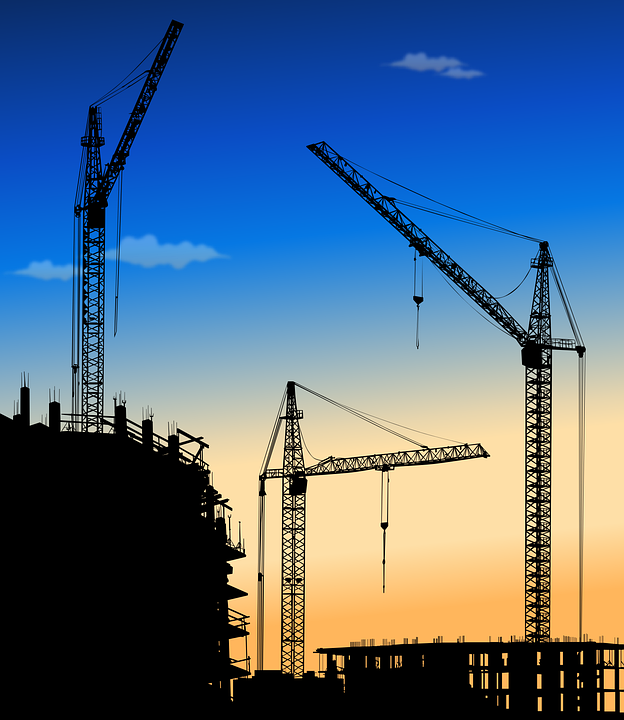Equipment for the construction industry is becoming more and more perfect. Many manufacturers are focused on making their machines “smarter” by using proprietary technologies that increase the efficiency of their production operations.
That being said, everyone already understands that in order to improve the efficiency of equipment, technology must mean more than just collecting and transmitting a large amount of data to inform the operator. It must be connected to the machine’s control system to help simplify operations.
John Deere WorkSight and ForestSight Technology Solutions Marketing Manager Andrew Kahler identified four key milestones that are taking the construction industry to new levels of productivity, efficiency and equipment uptime.
These achievements include:
- telematic systems;
- automatic systems for precise soil profiling;
- weighing systems;
- unmanned aerial vehicles (UAVs) or drones.
Telematic systems
Telematics is one of the key technologies that can radically change the way the construction industry works. Telematics systems provide continuous monitoring of equipment and the distribution of alerts about errors and malfunctions, helping to work without downtime, prevent theft or unauthorized use of equipment.

Today, telematics systems are used by many manufacturers to collect and communicate critical equipment health information to fleet managers and equipment owners.
In addition, telematics provides the construction industry with a number of other benefits, including an increase in productivity, an increase in the efficiency of equipment, and a level of safety in the performance of work.
An example is the JDLink telematics system offered by John Deere. Andrew Kaler emphasized that one of the very important aspects of the JDLink telematics system is the possibility of remote access from anywhere in the world.
Automated systems for precise soil profiling
The next technology that helps to make the work of construction equipment more efficient is leveling technology, laser or ultrasonic. Often suppliers of automated ground grading systems team up with equipment manufacturers to jointly develop and implement state of the art 3D ground grading systems without the requirement of installing external GPS antennas or cables. This approach helps to reduce costs and reduce the risk of equipment theft or damage.
Topcon Positioning Systems and John Deere have formed a strategic alliance to create the SmartGrade leveling system and implement an integrated leveling system in the construction industry.
The creation of partnerships for similar purposes is observed among other manufacturers. These companies include Case Construction Equipment and Leica Geosystems, which is now part of the Hexagon AB multi-brand group of companies.
The partnership between these two world-renowned companies, announced back in 2014 and continuing to this day, was created with the goal of creating high-precision construction tools.
The advantage here is to create a wider selection of non-in-vehicle high-precision systems that Case dealers offer as options. Among such tools are pipe laser levels, rotary laser levels, route finders for underground utilities, optical and digital levels.
Weighing systems
The weighing system gives quarries and construction companies the ability to control the amount of material being moved.
John Deere offers state-of-the-art electronic payload scales as well as inline payload scales with more limited functionality. The system is able to measure the mass of material in the bucket and in trucks, optimizing the duration of work cycles.
Another example of such a system is Caterpillar’s on-board weighing and real-time operator feedback systems.
These systems help operators achieve accurate bucket loading. Through the system, the operator can view the current values of the bucket weight and the total weight of the material in the truck bed, as well as track key performance indicators such as daily output, number of machines loaded, fuel consumption per ton of material.
Overall, this technology avoids machine trips to load scales, helping to increase equipment and operator efficiency while reducing costs and improving jobsite safety.
Unmanned aerial vehicles or drones
According to the analytical company Teal Group, the attention of investors today is attracted by civil unmanned aerial systems. According to the company’s forecasts, in the period of 2018 to 2027, the civilian market, i.e. non-military, unmanned aerial systems will grow by 12.9%.

The company also predicts that commercial drones will outpace the consumer market by 2024, with the construction industry leading the commercial drone market over the next decade.
A number of technology companies are already offering “intelligent” systems that will help change the way construction sites are organized. In the case of John Deere, a strategic alliance has been formed with Kespry to create a revolutionary new system that will allow surveying any terrain in minutes.
Drones provide an opportunity to quickly collect valuable information for tendering, monitoring performance, managing product warehouses and checking the progress of projects.
Training of equipment operators
Perhaps one of the biggest challenges posed by the emergence of new technologies is training operators so that they can maximize the benefits that innovative technologies provide.
For inexperienced operators, equipment manufacturers and dealers have training resources available, from operation and safety videos to simulators and training courses, but none of these types of training resources are a substitute for a thorough understanding of the instruction manual.
Titan International’s OTR product manager, Johni Francis, adds that successful implementation of a new technology requires involvement of a fleet manager, operator, dealer or tire manufacturer and ongoing consultation with stakeholders.
As an example, he cites a tire pressure monitoring system that allows operators to monitor tire pressure and temperature in real time from the comfort of the cab. The sensors of the system are mounted on the wheels and must be connected to the telematics system of the vehicle.
It is the interaction between the fleet manager, the operators and the dealer or tire manufacturer that ensures that fleets get the most out of implementing this technology.
